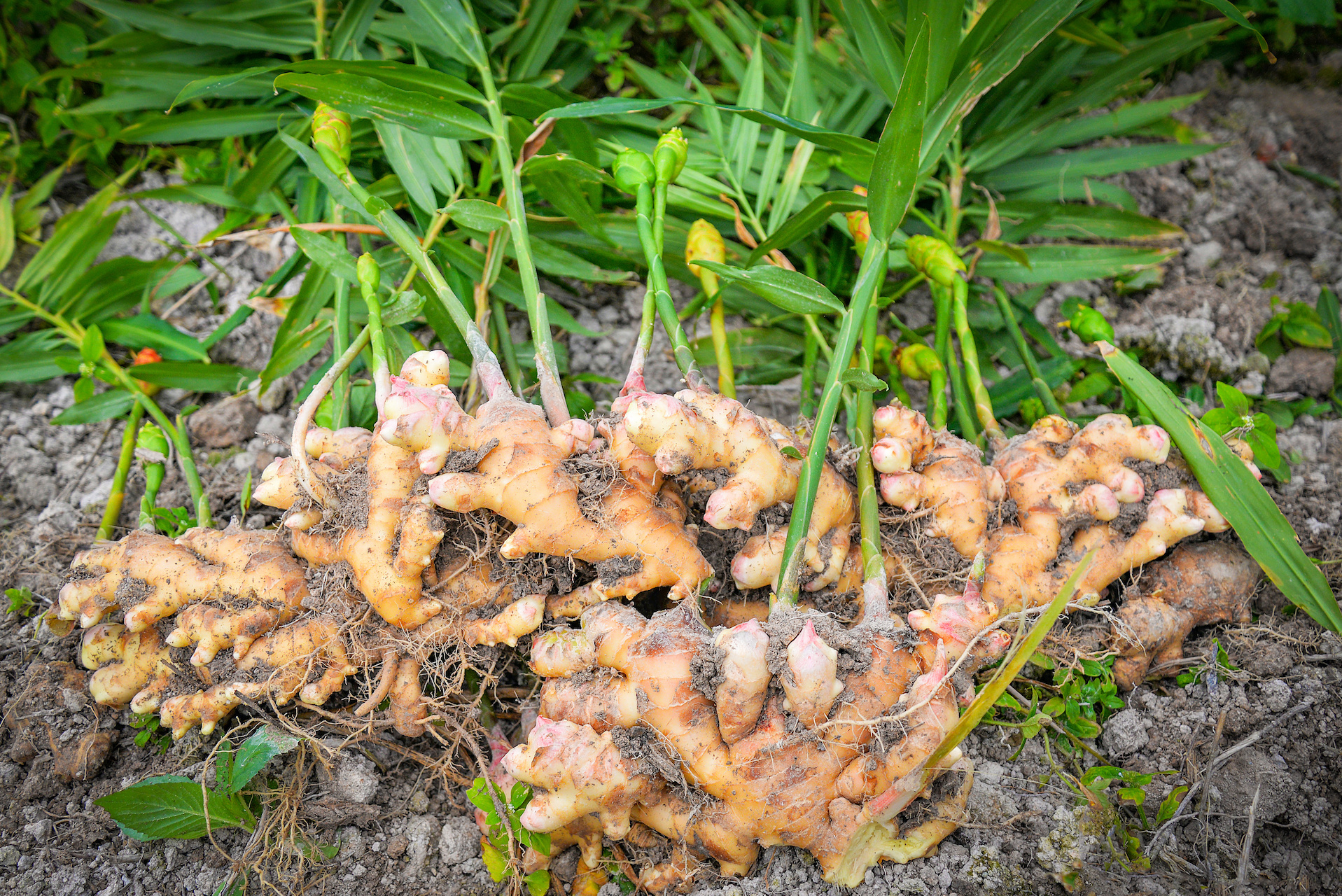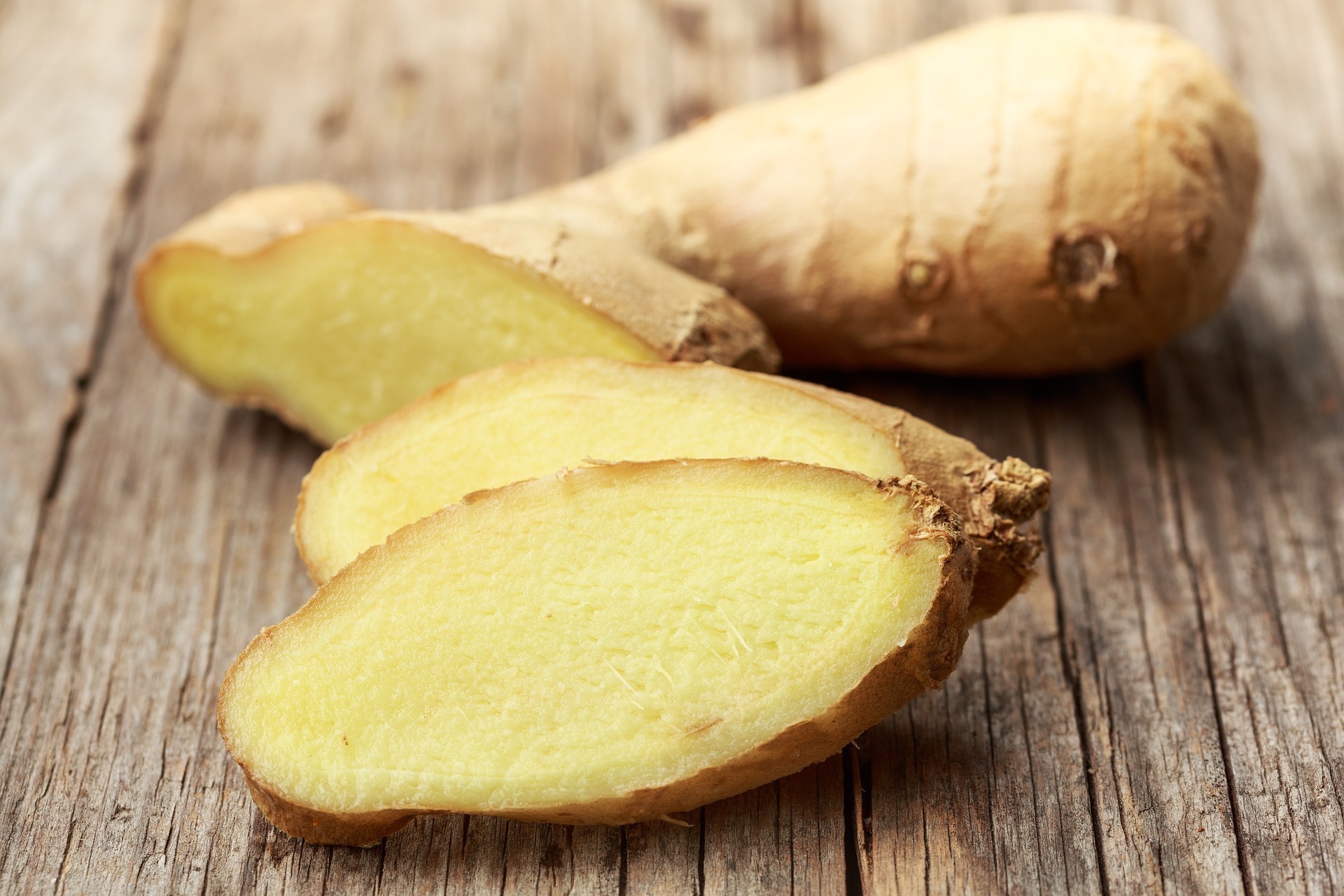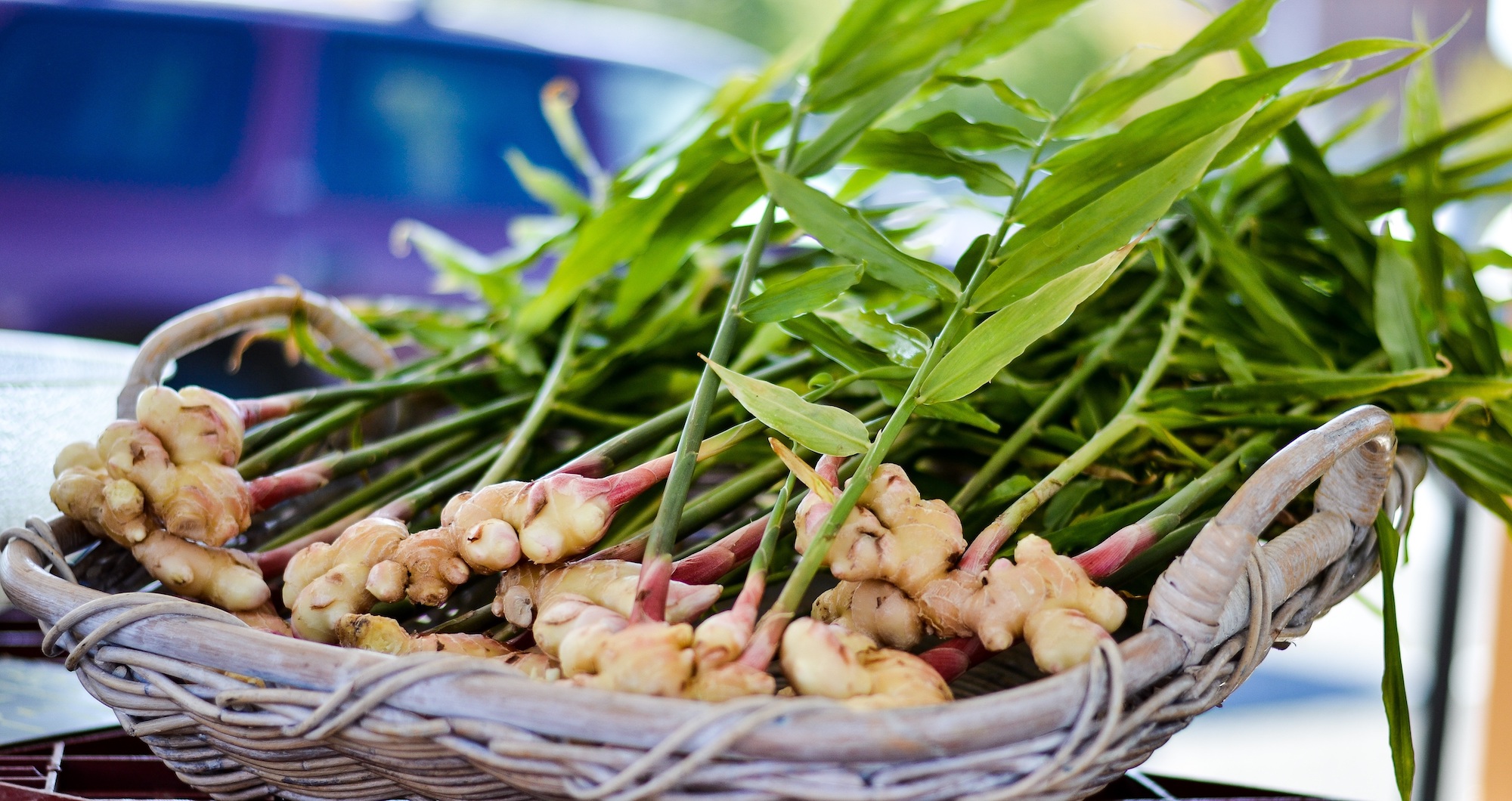Zingiber officinale
ENCYCLOPEDIA BOTANICA / GINGER
Ginger is one of the oldest and most important spices. It’s a stimulating aromatic, with a history as food, flavour and medicine that spans twenty five centuries.
Description & Habitat
Ginger (Zingiber officinale) is the headline spice of the Zingiberaceae (ginger) family, and a close cousin to cardamom, galangal, turmeric and grains of paradise. Native to China and India, ginger is now widely cultivated throughout the tropics for its large, tuberous rhizome. The plant is an erect perennial that grows up to 1–2 metres in height with green, reedy stalks and strappy leaves. When it blooms, the flowers are usually white, with a pink or purple-tinged lip and, like the rhizome, are extremely aromatic.
Depending on how it's prepared ginger can be warming or cooling, invigorating or soothing. It's versatile and widely-enjoyed, it has a long history of use as both a spice and a medicine. It's an integral part of so many food cultures, and can be used fresh, dried, powdered, candied and pickled. Ginger also plays an important role in Chinese and Ayurvedic medicine, where it's traditionally used for problems involving the digestive system such as nausea, irritable bowel, diarrhoea, indigestion and colic.
Parts used: Rhizome

Time of harvest has a big influence on ginger's flavour.

‘Ginger root’ is technically a rhizome (underground stem).
Aroma & Flavour Profile
Fresh ginger is usually citrussy, with floral, pine and eucalyptus notes and a warming heat. But where and how the plant is grown, harvested and stored has a big impact on its flavour. There are several dozen varieties cultivated for spice and each have their own properties and reputations. Some varieties contain more citral are therefore more lemony (Australian ginger) while Jamaican ginger is known to be richer and more pungent with a stronger camphorous note.
Growing conditions can have an effect on flavour (shade making the ginger more citrussy) as does the timing of when the rhizome is harvested. Young plants (under 7 months old) are quite mild with thin skin, and this makes up the bulk of the culinary ginger you’ll find in shops. Flavour increases quickly after that point, and the aromatic oils in the plant peak at around 9–10 months (which is when ginger grown for commercial essential oil production is often harvested).
Storage (drying and powdering) has arguably the biggest impact though. Like many botanicals, fresh and dried ginger have different flavour and aroma characteristics, but with ginger this difference is quite pronounced, it’s best to treat them like separate aromatics. Fresh ginger has both a freshness and a fiery heat along with that citrus nose. Dried ginger is much more pungent and spicier, while cooked ginger is milder and spicy-sweet.
These differences are down to chemical reactions that account for the proportion of ginger’s various aromatic compounds—gingerols, zingerone and shogaols. Gingerol is a compound that’s found in fresh ginger (usually present as a pungent, yellow oil). It’s related to capsaicin and piperine, and activates the heat receptors on the tongue. It’s also responsible for the more citrussy tones found in fresh ginger. When ginger is dried it loses gingerol (and with it, its citrussy notes), as the gingerol undergoes a dehydration reaction, forming shagoles, which are spicier and almost twice as pungent. And when fresh ginger is cooked gingerol is transformed into zingerone, which is milder and sweeter. So expect very different results using all these aspects—fresh, fresh/cooked, dried and dried/cooked.
There is a lot of scope to play and experiment. Ginger wakes up other flavours, is a catalyst and activator. It definitely stimulates the taste buds and increases flow of saliva, it adds warmth and complexity. It’s especially good with citrus (think of the classic lemon-honey-ginger combination), and is complimented by liquorice root, which rounds and softens ginger without compromising the warmth.

Recommended techniques
• Hydro distillation • Steam distillation • Spirit distillation (gin, aromatic spirits, liqueurs) • Tincture • Infusion • Decoction • CO2 extraction • Absolute/solvent extraction •
Uses
Teas and infusions
Infusions of ginger—either on its own or with citrus, honey and other spices—have been drunk for centuries and enjoyed for flavour and used as medicine. It is used extensively in herbal tea blends, has a starring role in Indian chai, and even though it is obviously spicy, ginger is often used to calm an upset stomach and aid digestion. Clean, fresh and restorative, ginger tea is also popular for easing the symptoms of morning sickness. Ginger syrup, ginger beer and ginger ale are all routinely used as ingredients in cocktails and drinks. Juiced fresh ginger is a popular ingredient in fresh juices and tonics and makes an excellent non-alcoholic cocktail. Niki Segnit (The Flavour Thesaurus) recommends cranberry juice, lime and ginger as a superb non-alcoholic beverage, as the ‘hot shock of ginger’ elevates the fruity citrus drink to something delightfully complex.
Culinary
Ginger has been eaten for many centuries and in many forms—fresh, dried, powdered, pickled and crystalized. Fresh ginger is an essential ingredient in many cultures’ daily meals, from curries, to soups, stews and stir-fries. Its powdered form is used extensively in baking, jams, and for flavouring drinks, curry mixes and as seasoning in ketchup. Ginger has also been used to flavour beer since the Middle Ages, and gives us the famous drinks ginger beer and ginger ale.
Essential oil
Ginger is most often grated or finely chopped and dried before steam-distilling for essential oil. The oil is pale yellow to golden and the yield can be up to 3% depending on age, source, and condition. Ginger essential oil is warming and heating, and used mainly in massage oils to stimulate circulation. A note on sourcing—it pays to experiment, as most fresh ginger is harvested early in the season especially for eating and may have a low oil content. We found this out ourselves in a workshop when using some large, healthy-looking ginger roots from a grocer. We were expecting a beautiful golden, pungent EO to appear, but there was hardly even a meniscus and even the hydrosol was light and thin. But on the other hand, we encountered a mountain of fresh ginger grown in Fiji at a West Auckland market. It was much smaller than the usual variety sold in supermarkets, and felt very fresh, with a pungent aroma, juicy and vibrant. When steam distilled it yielded a rich golden oil and a pungent hydrosol.
Hydrosol
Again, we recommend grating or finely chopping ginger before either hydro or steam distilling. This will break down the fibrous plant matrix and optimise the surface area exposed to water and vapour. Good ginger will yield a pungent hydrosol even from a steam distillation for essential oil, but its good to try a dedicated hydro distillation, just for the hydrosol. Ginger hydrosol has the flavour and aroma of fresh ginger, without the heat. It’s good used in small amounts in herbal teas and non alcohol cocktails.
Spirits
Ginger is a great gin botanical, (it’s said to be a key ingredient in Gordons gin blends) as it wakes up other flavours and finds links between citrus and spice. It adds a dry, spice note and is warm on the finish, helping round out the flavours and add to mouthfeel. Ginger can be substituted for grains of paradise as they are the same family and rich in gingerols. It also lends notes of spice to herbal liqueurs, bitters and vermouths, and is the star of Domaine de Canton, and Art in The Age’s ‘Snap’ ginger liqueur, which is based upon the traditional Dutch lebkuchen biscuit. And let’s not forget the (in)famous ‘Stones Ginger Wine’. Ginger beer and ginger ale are also used as ingredients in many cocktails, like the Moscow Mule and Dark and Stormy.
Perfumery
Ginger is used extensively in perfumery, often as top and middle notes because of its span from fresh and citrus to spicy warmth with earthy undertones. Described as the freshest and lightest of the spices, ginger blends well with citrus, floral and woody notes, and can be used to add complexity to sweet vanillas. The steam-distilled essential oil, CO2 extract and absolute are all utilised. Perfumers like this botanical’s ‘ability to blow hot and cold at the same time’ due to being both effervescently fresh and warmly spiced.



